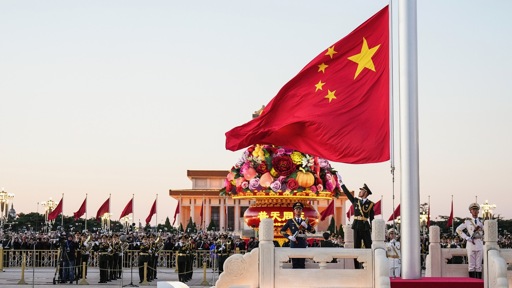The People’s Republic of China celebrated its 76th anniversary this Wednesday, October 1. The anniversary coincided with the end of the 14th Five-Year Plan, the first planning cycle since the achievement of the First Centenary Goal in 2021, namely, “building a moderately prosperous society in all respects”, known as Xiaokang in China. The Second Centenary Goal, set for 2049 – the 100th anniversary of the founding of the People’s Republic of China – aims to build the Asian powerhouse into a “great modern socialist country that is prosperous, strong, democratic, culturally advanced and harmonious”.
The Five-Year Plans are used along the way by the Communist Party of China (CPC) to direct the country’s economic and social development toward the larger centenary goals.
At an official reception in the Great Hall of the People, President Xi Jinping announced that the fourth plenary session of the 20th Communist Party Central Committee will be held in November to discuss the next Five-Year Plan (2026-2030). The new plan aims to achieve “decisive progress” toward basic socialist modernization, a target set for 2035 as an intermediate step before the Second Centenary Goal in 2049. Xi emphasized that even since January 2025, the country has deepened reforms, promoted high-quality development, and improved living standards.
The reception brought together some 800 Chinese and foreign guests, including Premier Li Qiang, who presided over the event, and other party leaders such as Zhao Leji, Wang Huning, Cai Qi, Ding Xuexiang, Li Xi, and Han Zheng. Xi reiterated his commitment to the “One Country, Two Systems” policy for Hong Kong and Macau and promised to expand exchanges with Taiwan, opposing separatism and external interference.
The timeline of the two centennial goals
The concept of the “Two Centenary Goals”, officially introduced in 2012 at the 18th National Congress of the Communist Party of China, establishes long-term milestones. The first goal was achieved in 2021, the centenary of the Communist Party, and included the eradication of extreme poverty as one of its main achievements.
The timetable up to the Second Centenary Goal in 2049 includes: completing the fundamental modernization of the People’s Liberation Army by 2027; implementing 300 measures to deepen reforms by 2029; and achieving basic socialist modernization by 2035.
Five-Year Plan abandons GDP target and prioritizes quality
The 14th Five-Year Plan, which ends this year, broke new ground by not establishing a quantitative GDP growth target for the first time in the history of China’s five-year plans. The strategy prioritized green transition, technological self-sufficiency, and common prosperity.
According to official data, more than 6.9 million people at risk of falling back into poverty were identified and provided preventive assistance. The “three guarantees” – compulsory education, basic healthcare, and safe housing – were expanded, consolidating the achievements of the eradication of extreme poverty completed in 2021.
“From a Chinese perspective, when we look back, we look back thousands of years, at a continuum. And when we look forward, we always want to look beyond this year or tomorrow,” explained Gao Zhikai, deputy director of the Center for China and Globalization. “When Deng Xiaoping made predictions about China in the 1970s, he looked to the end of the 20th century, the first quarter of the 21st century, and the middle of the 21st century.”
Rural revitalization as the basis of socialist evolution
Rural revitalization remains central to the development strategy. Du Taisheng, vice-rector of the China Agricultural University, told Brasil de Fato that “only when farmers’ problems are resolved can our agricultural modernization, and the modernization of the entire country, be finally achieved.”
The strategy calls for agricultural mechanization integrated with computerization, ecological practices, and smart technologies. Rural revitalization also includes other initiatives, such as encouraging urban residents to visit rural areas for tourism and ecological farming.
National defense and philosophy of peaceful resolution
On September 3, China held a military parade marking the 80th anniversary of its victory in World War II. Xi mentioned the date in his speech, emphasizing that historical experience should guide national construction.
“We always prioritize peace and want to distance ourselves from war of all kinds. In Chinese philosophy, war is always the last resort, after exhausting all other possibilities,” said Gao Zhikai. He contrasted this approach with countries that “tend to use war as a first option, using violence to solve problems.”
Still on foreign policy, Xi reinforced China’s commitment to multilateralism and the implementation of the Global Development, Security, Civilization and Governance Initiatives.
First published by Brasil de Fato in Portuguese.
The post People’s Republic of China turns 76: What stage is Chinese socialism in? appeared first on Peoples Dispatch.
From Peoples Dispatch via this RSS feed
What stage is Chinese socialism in?
Lol
In the repressive regime stage, like all the others.
It’s funny how the level of smugness of liberals matches their ignorance lol




